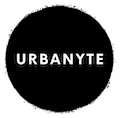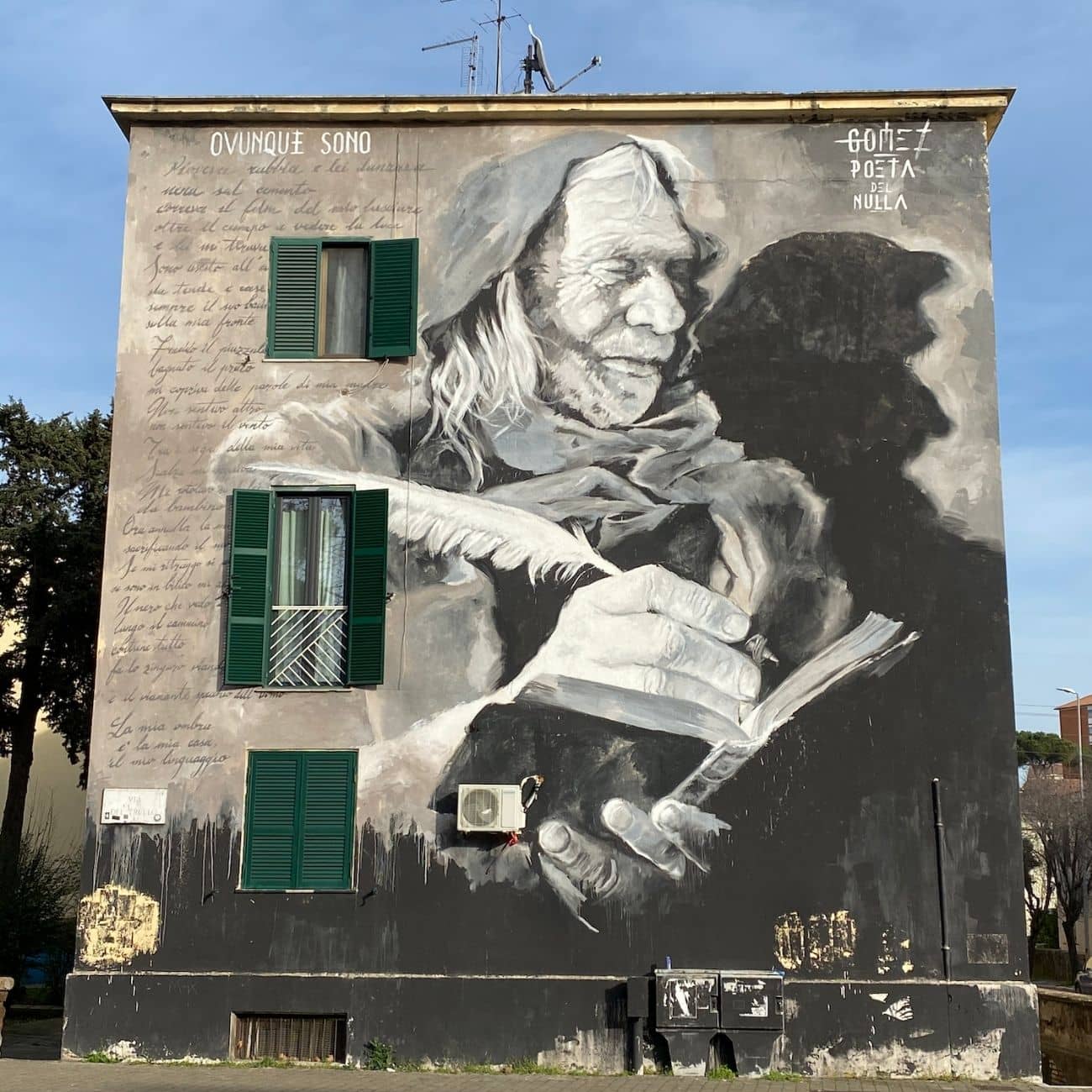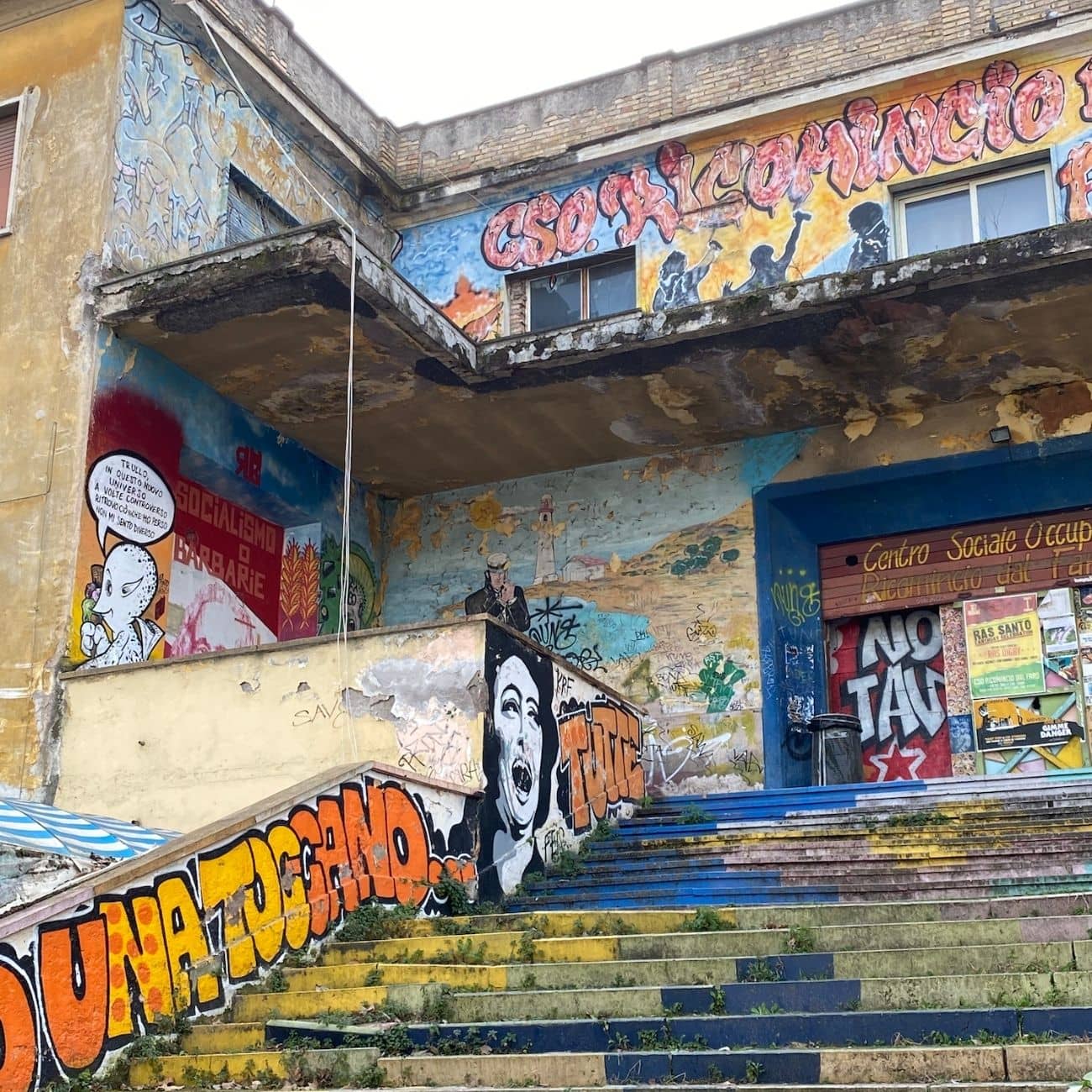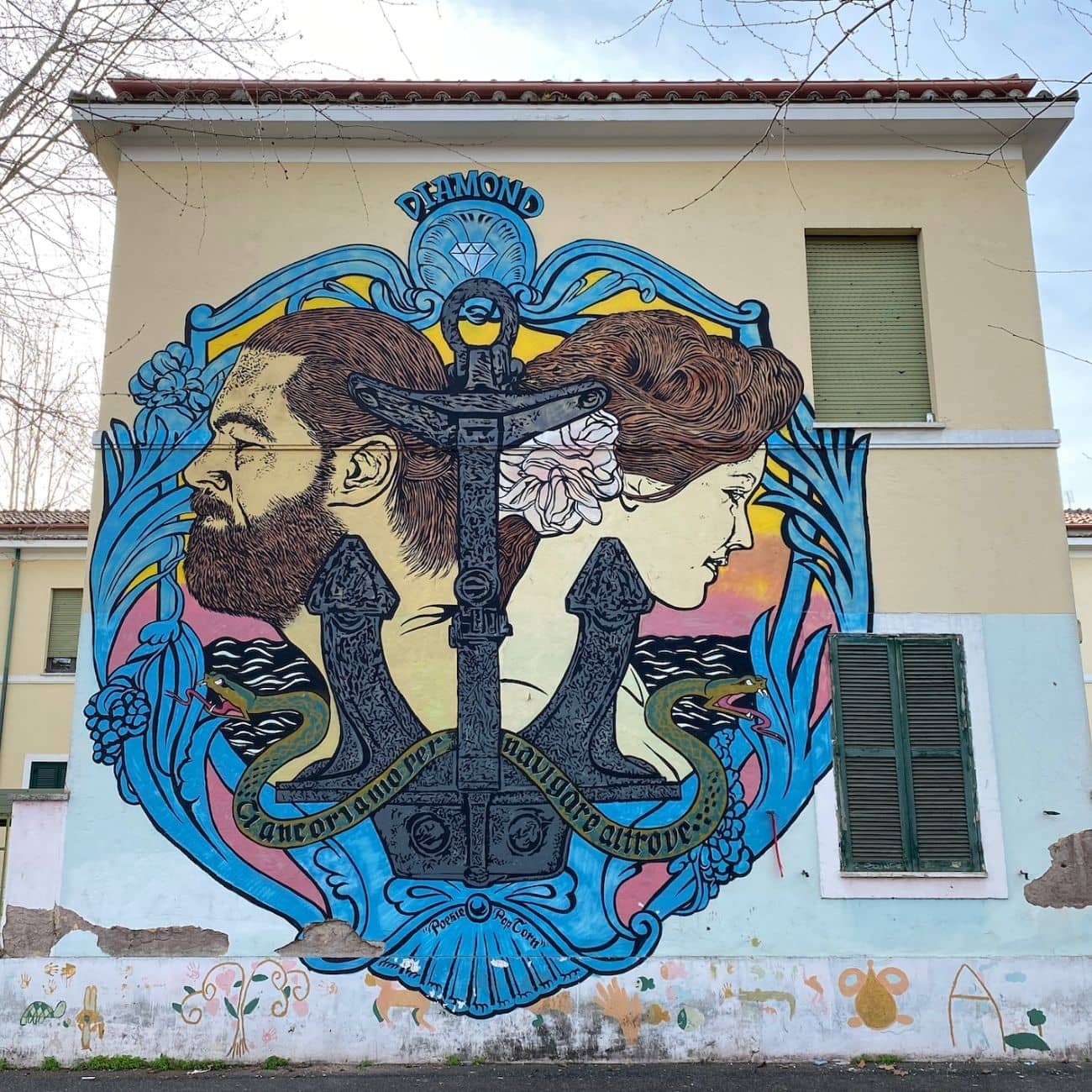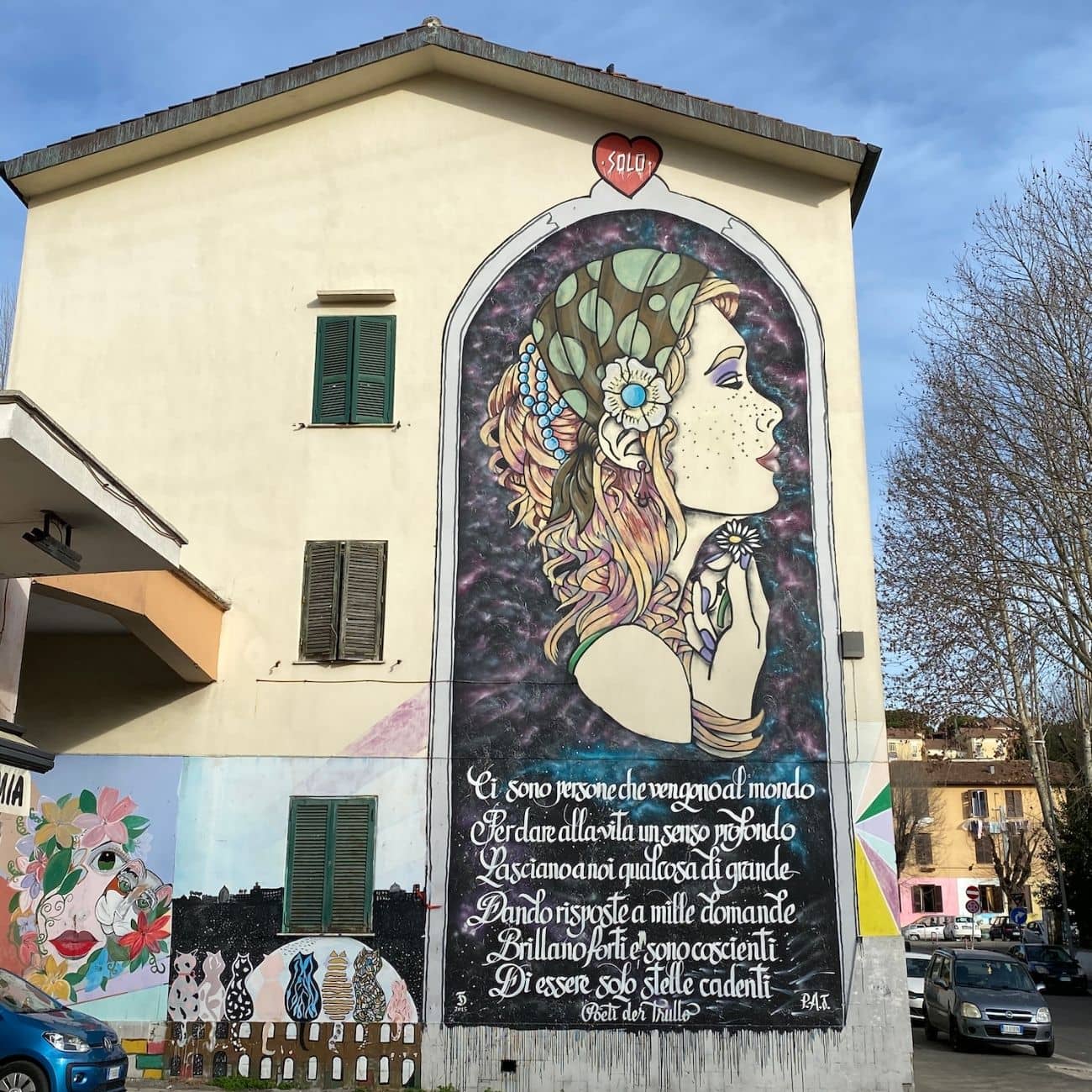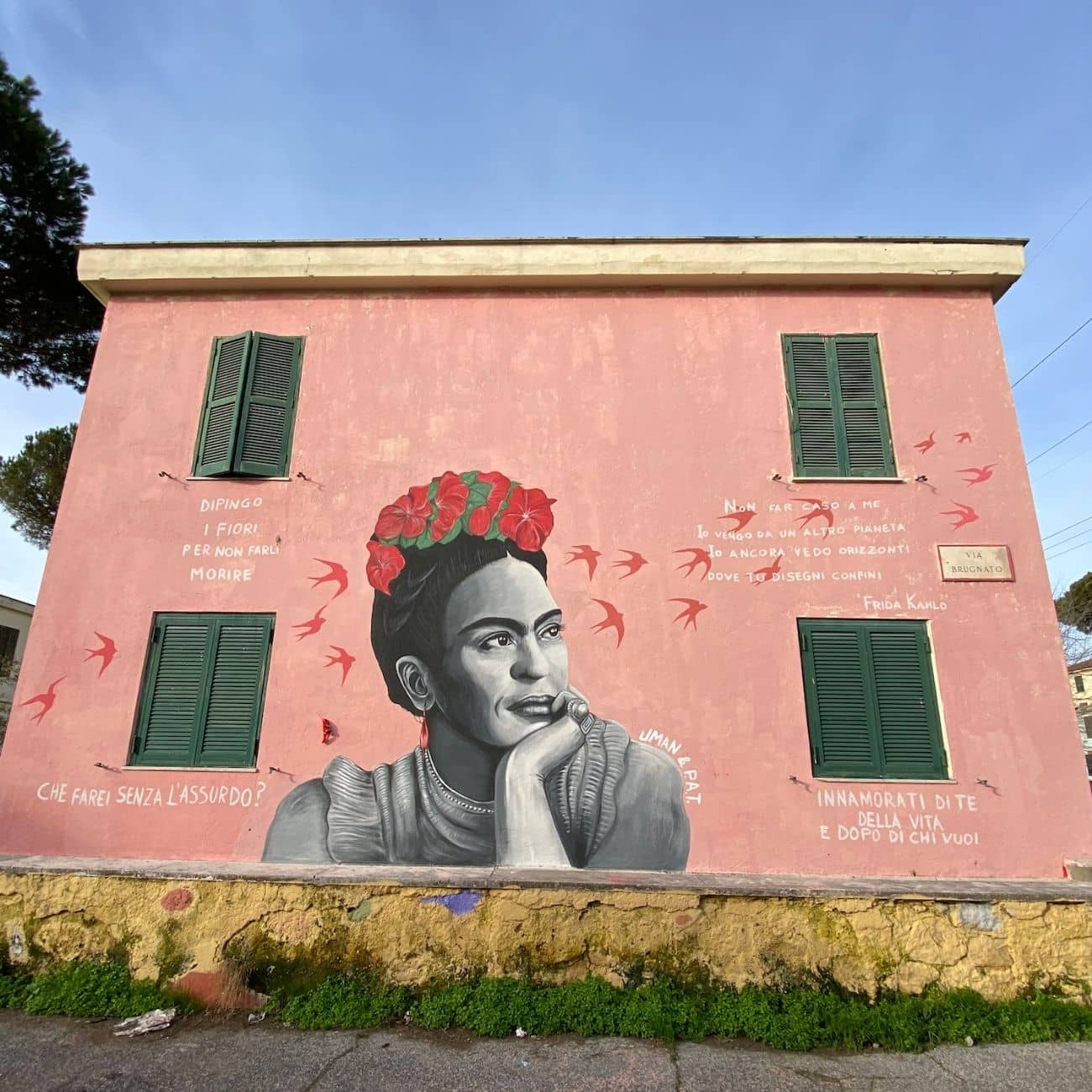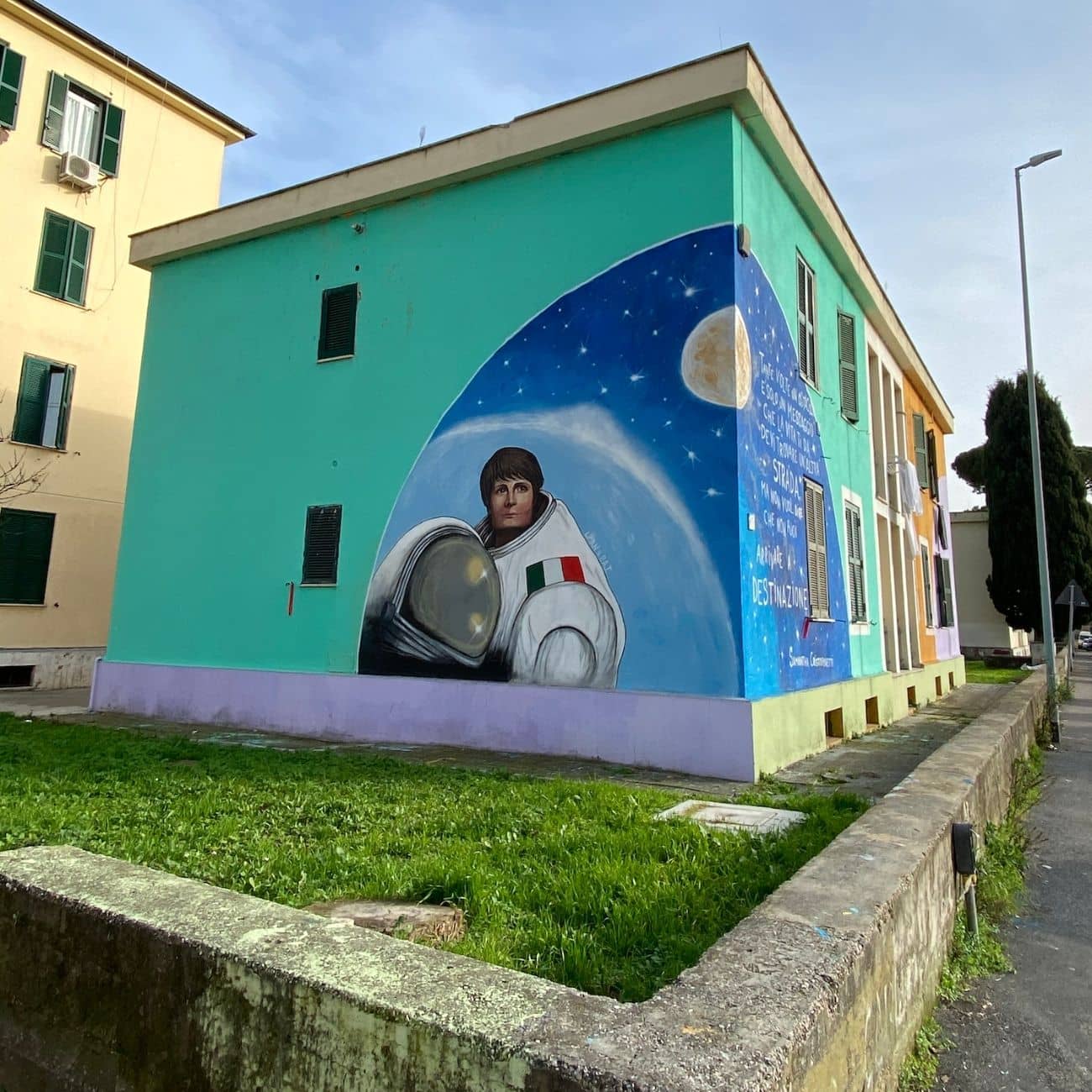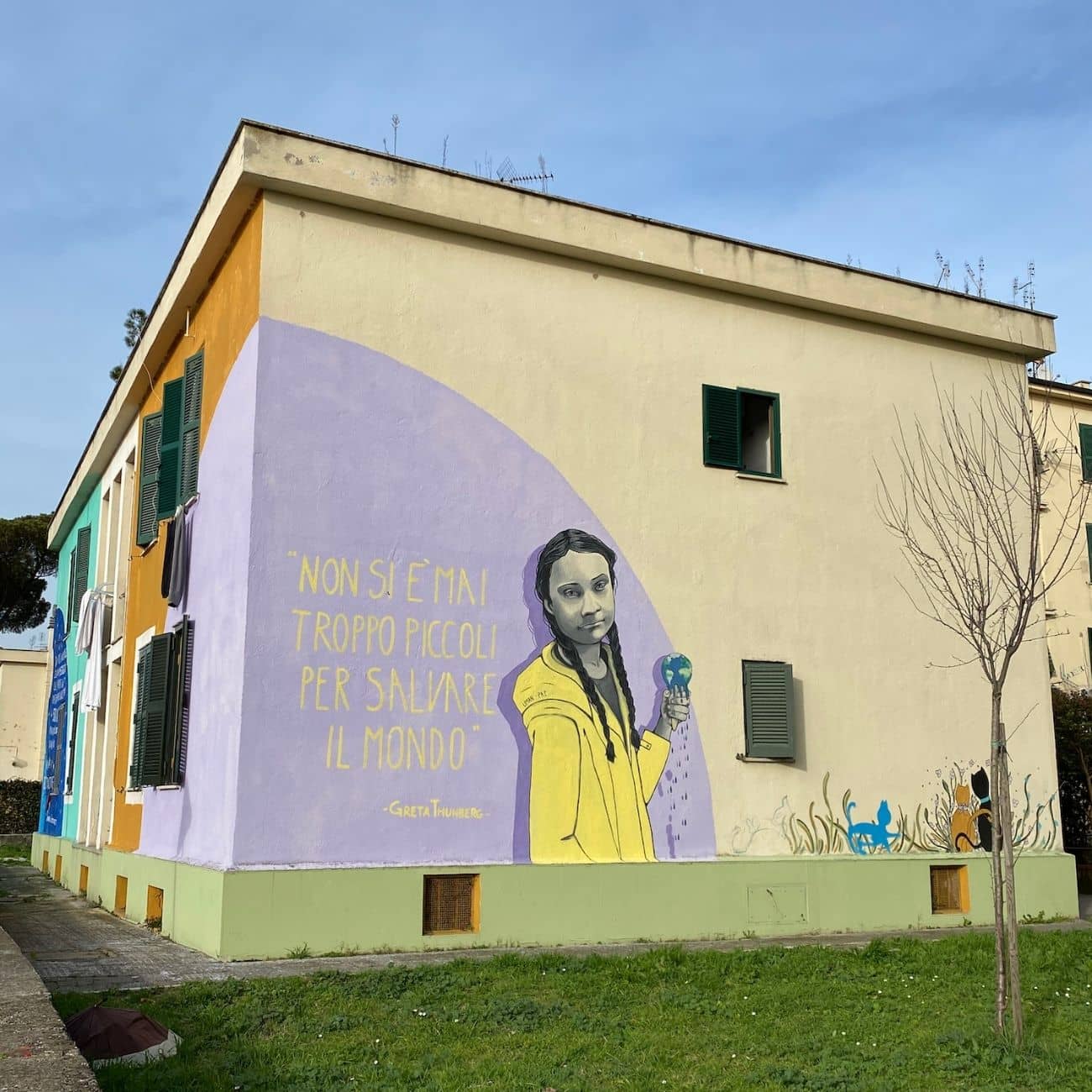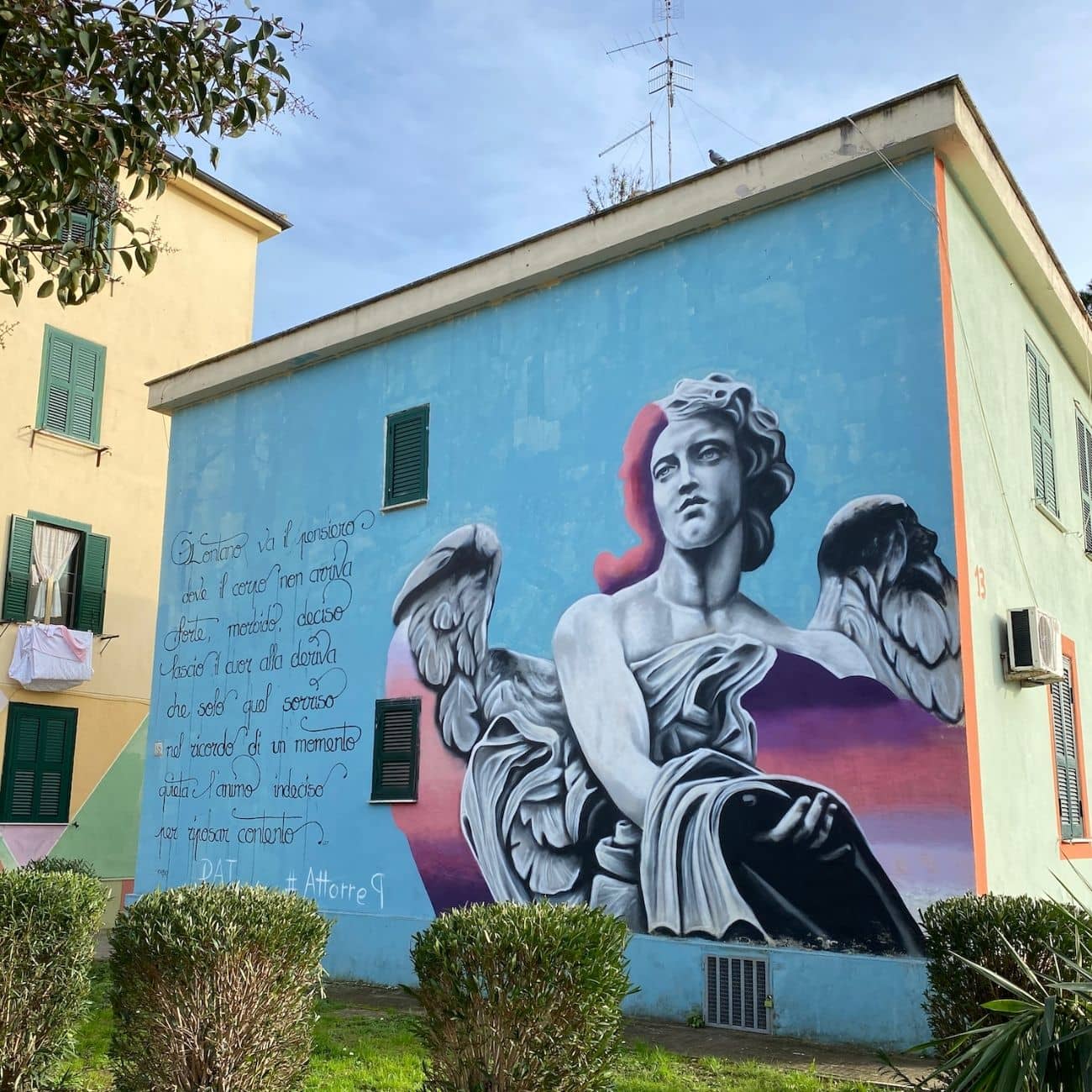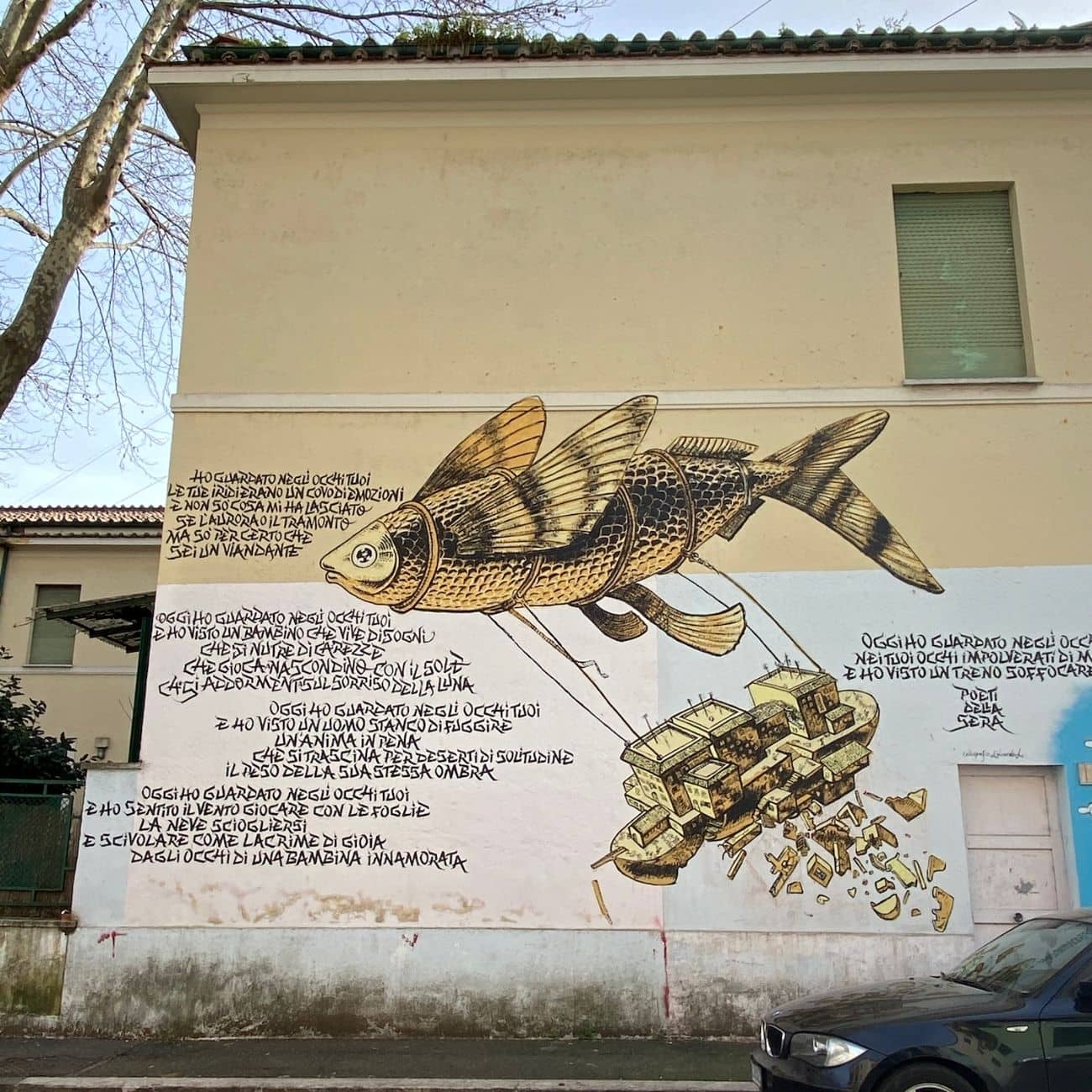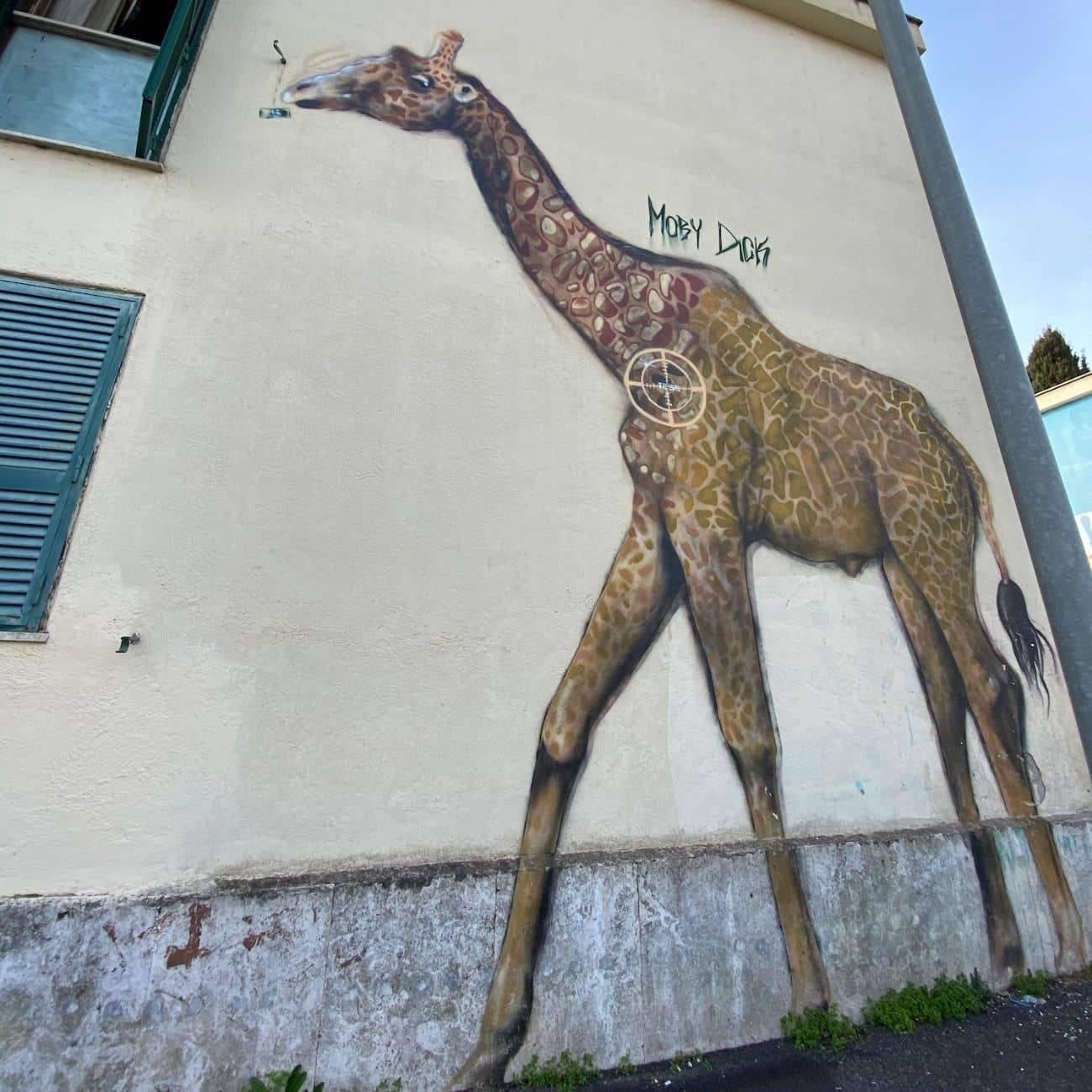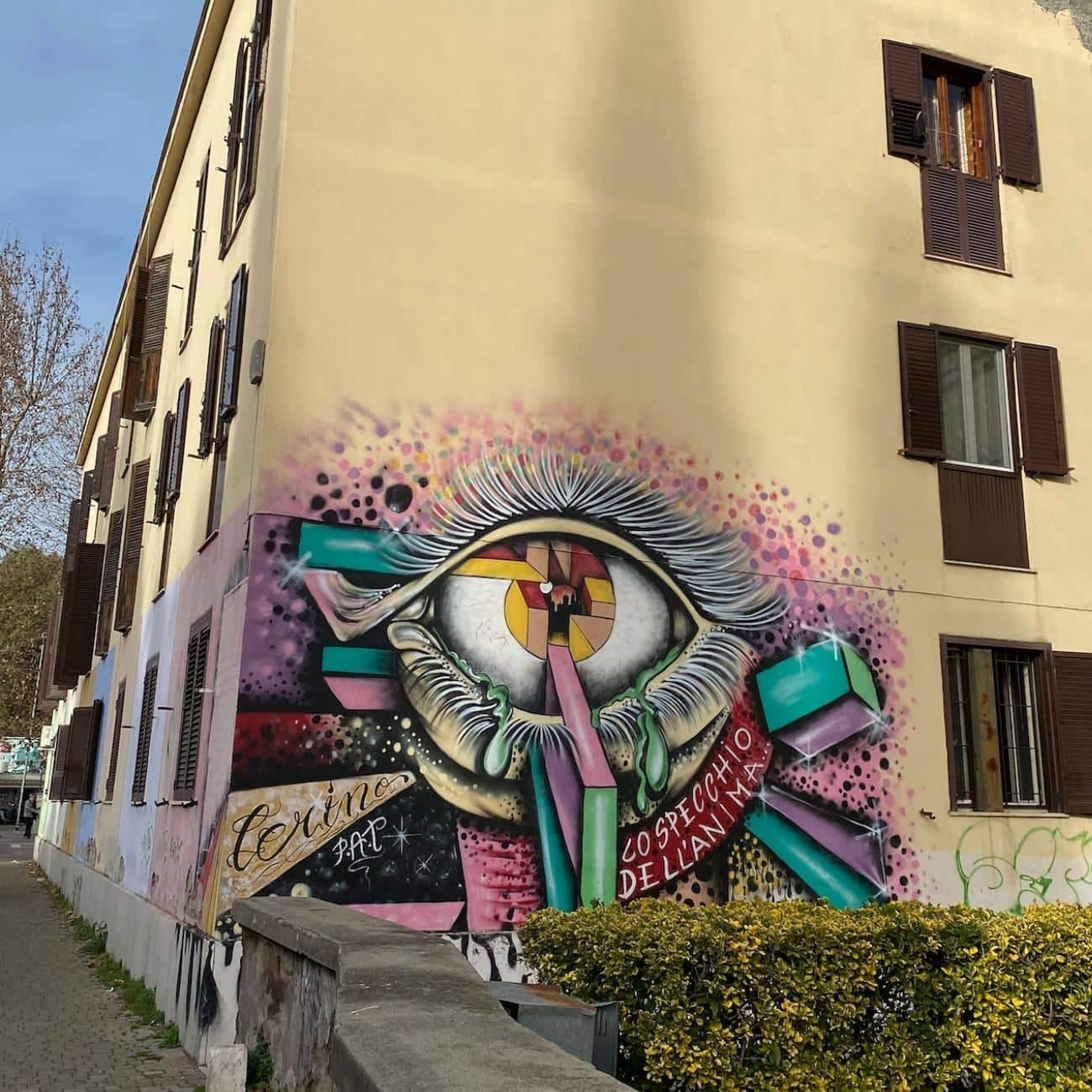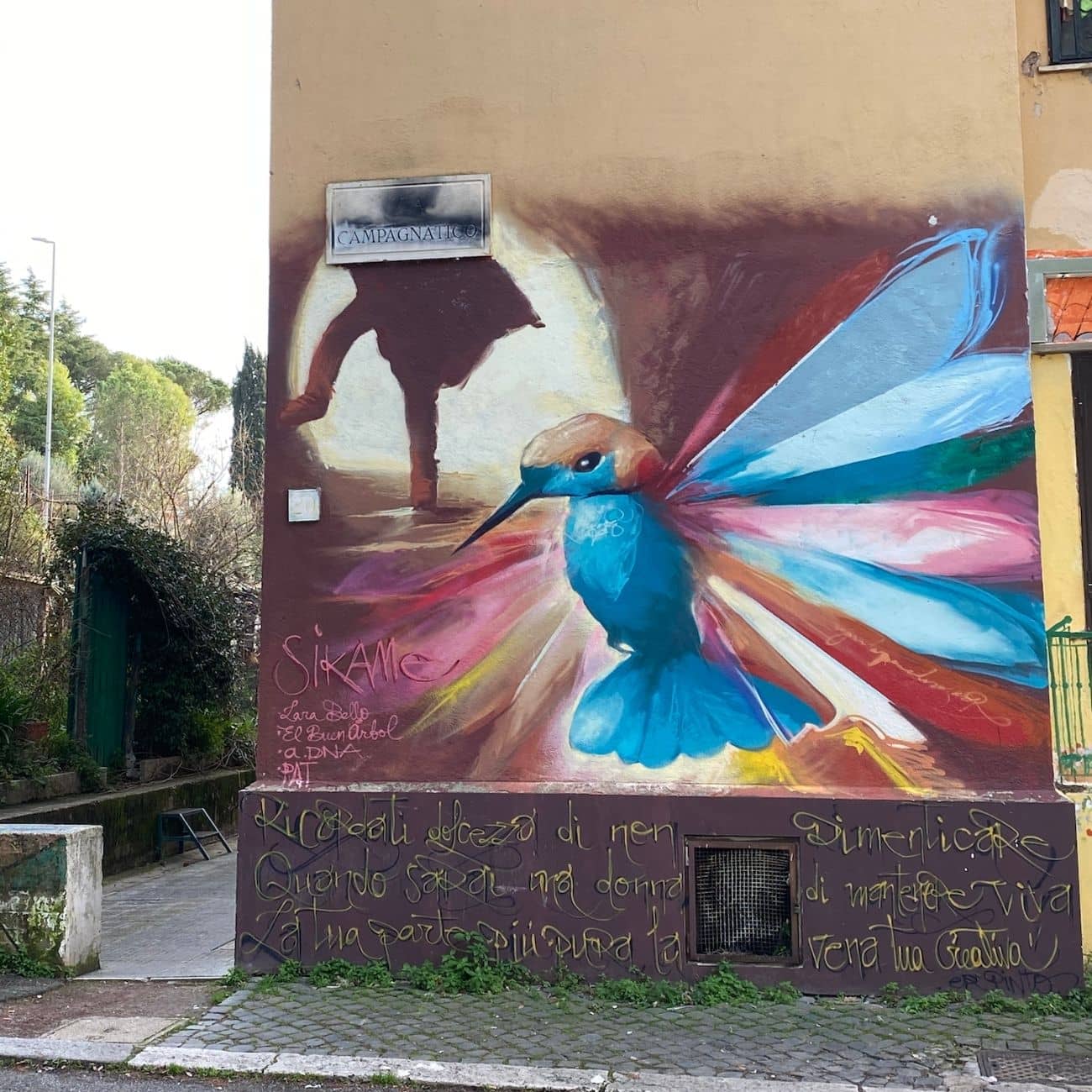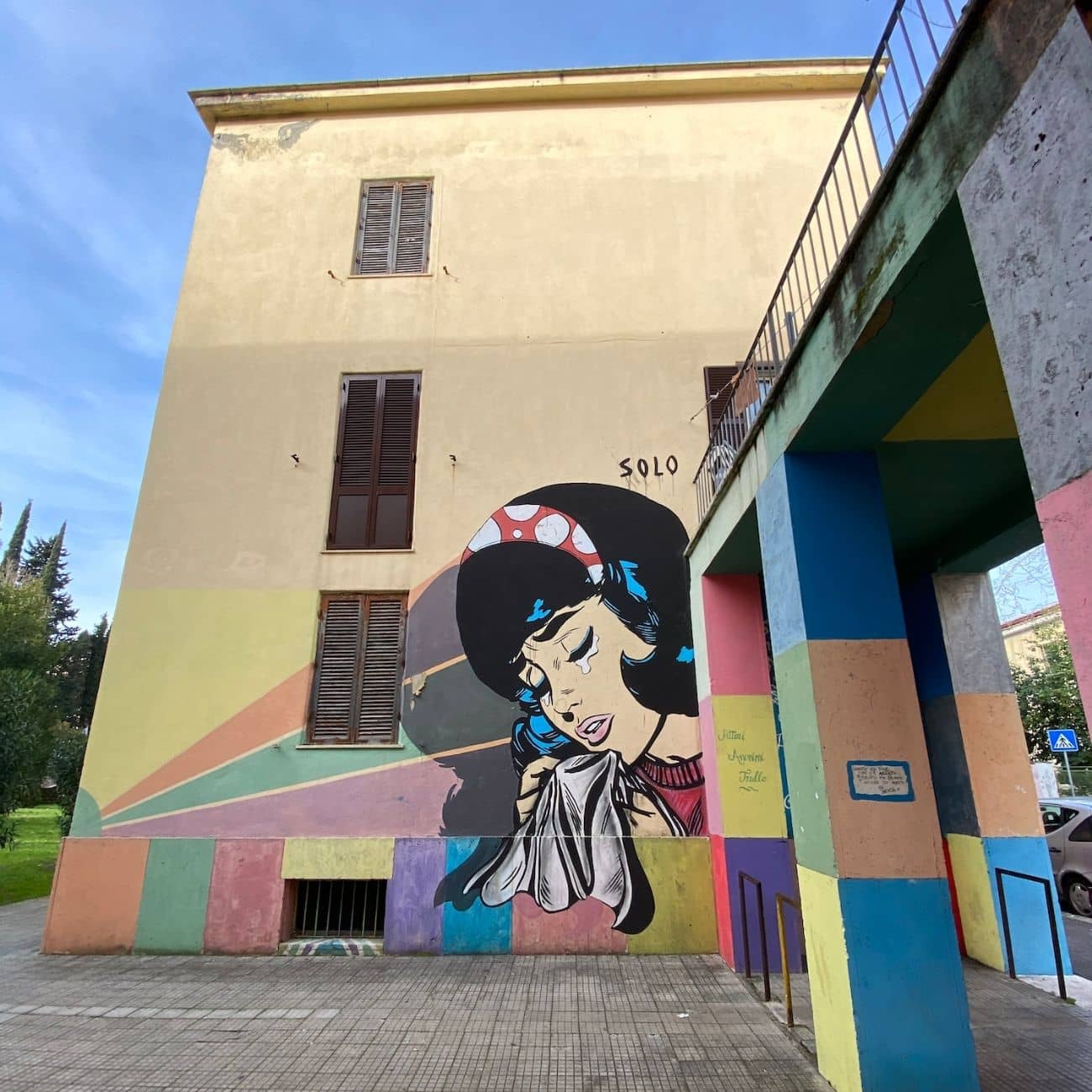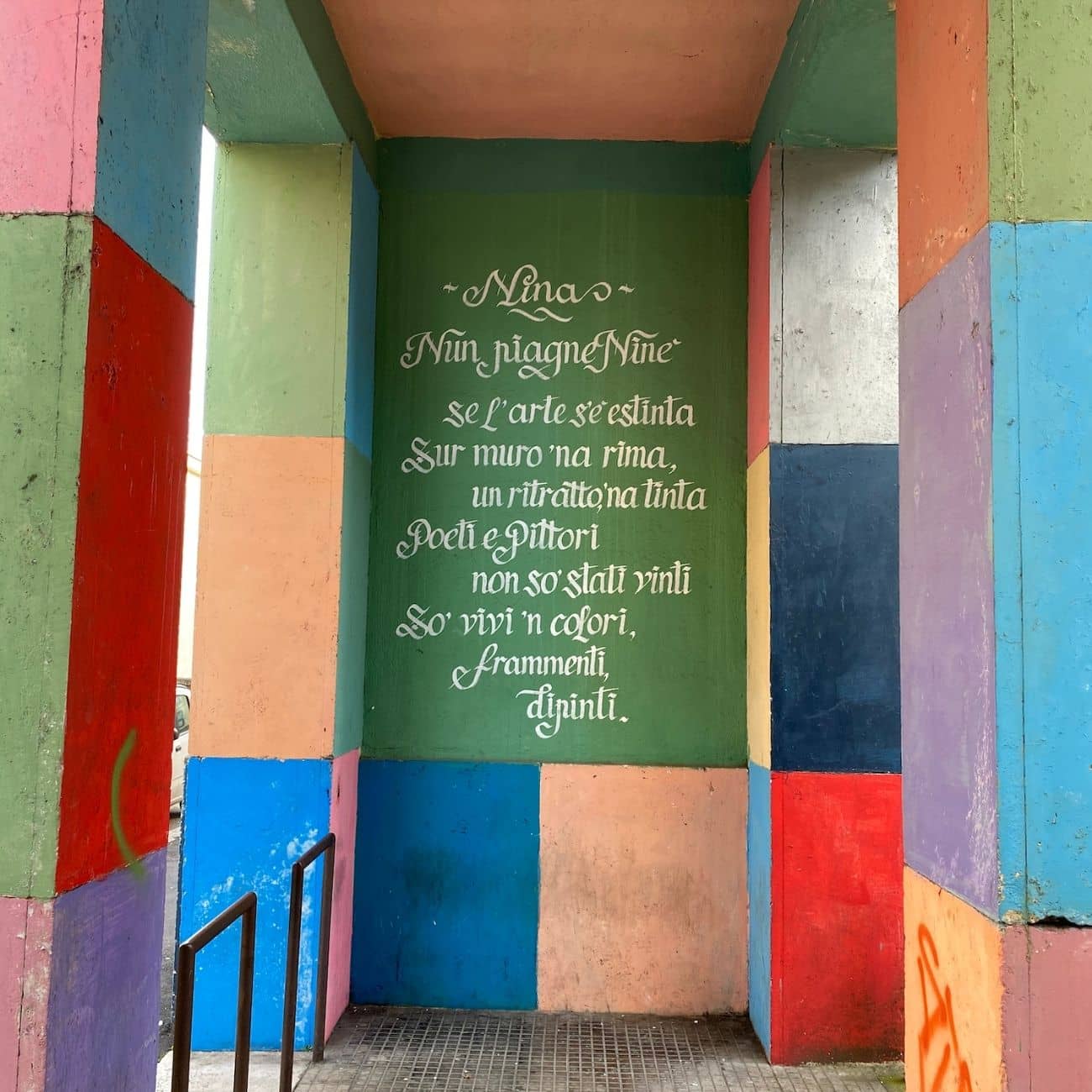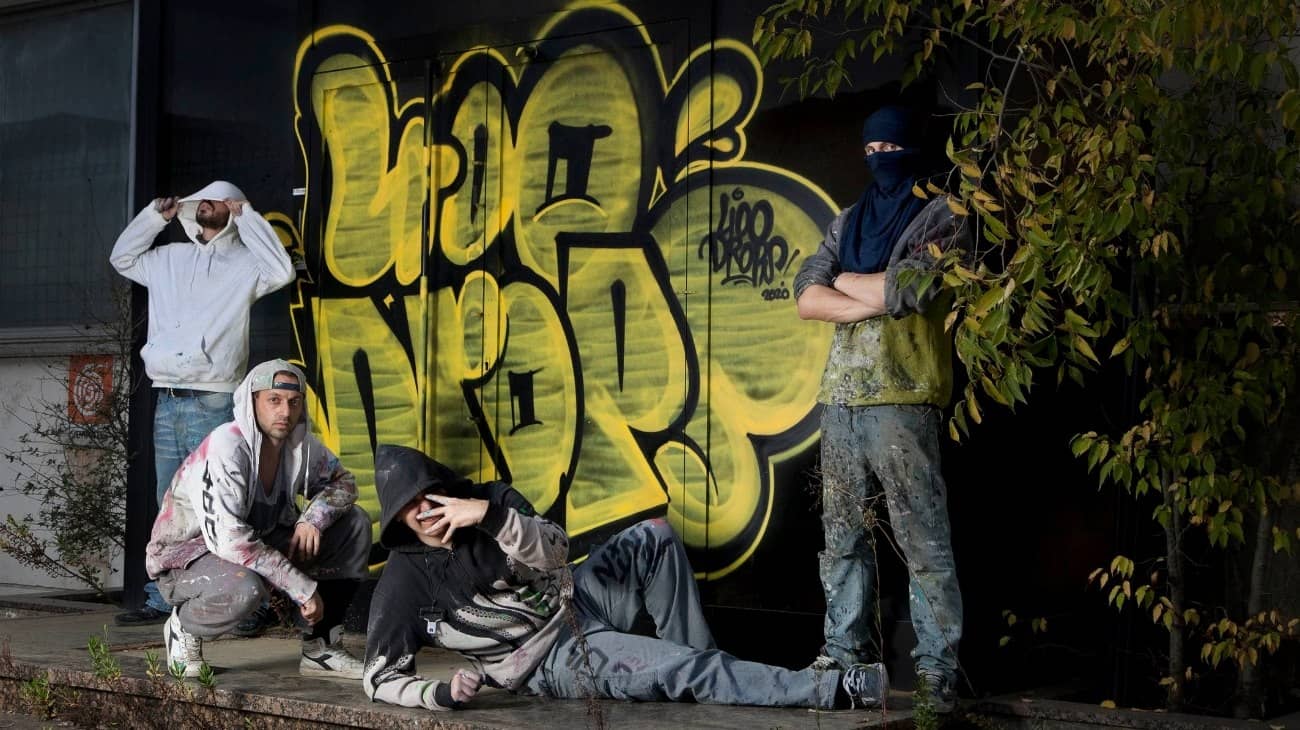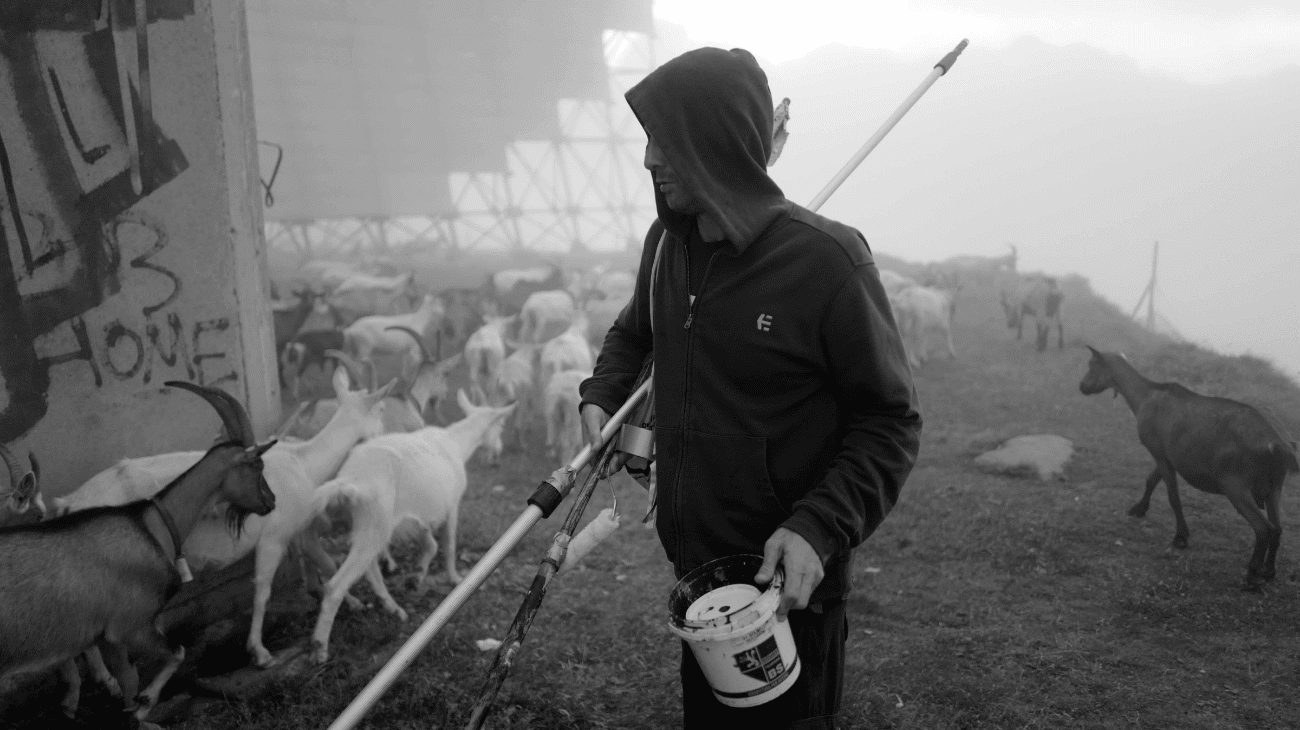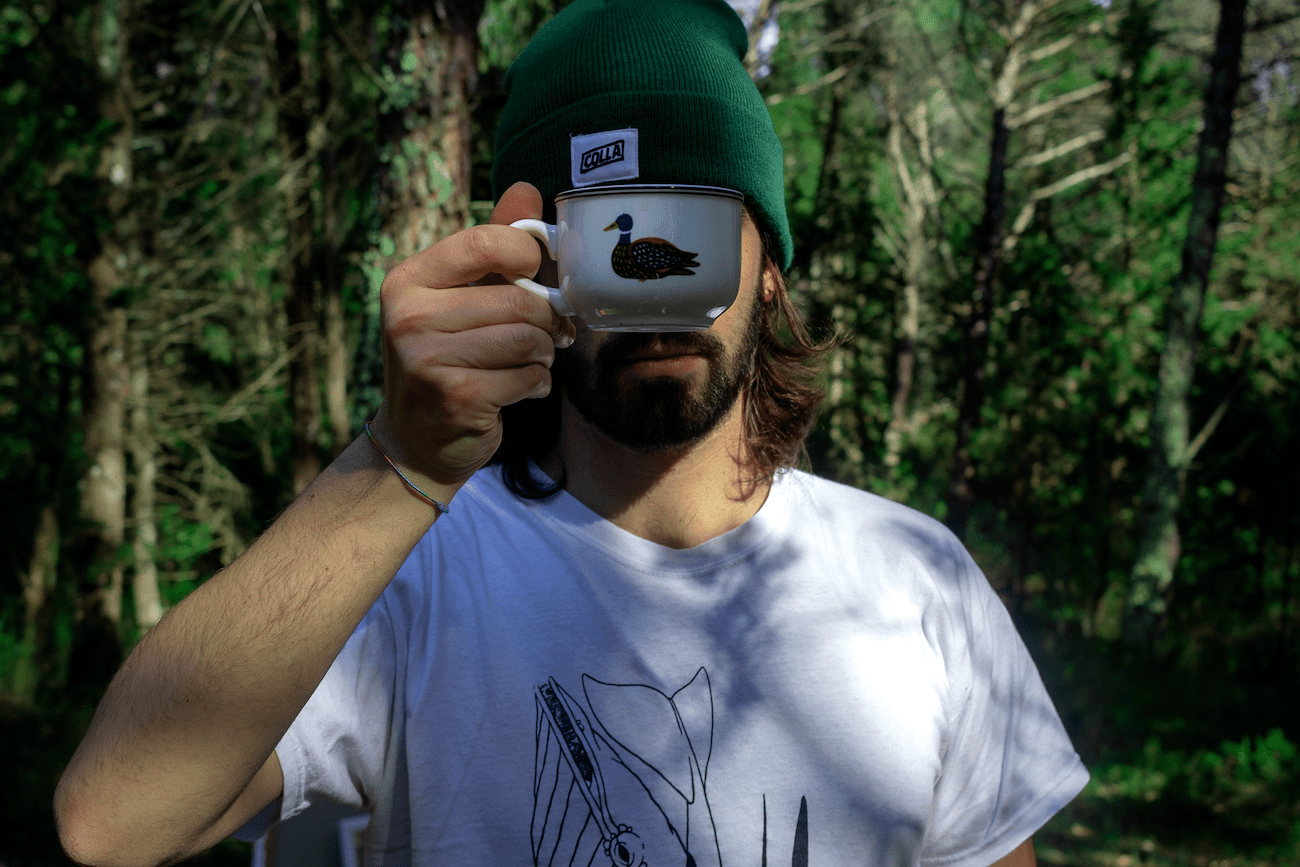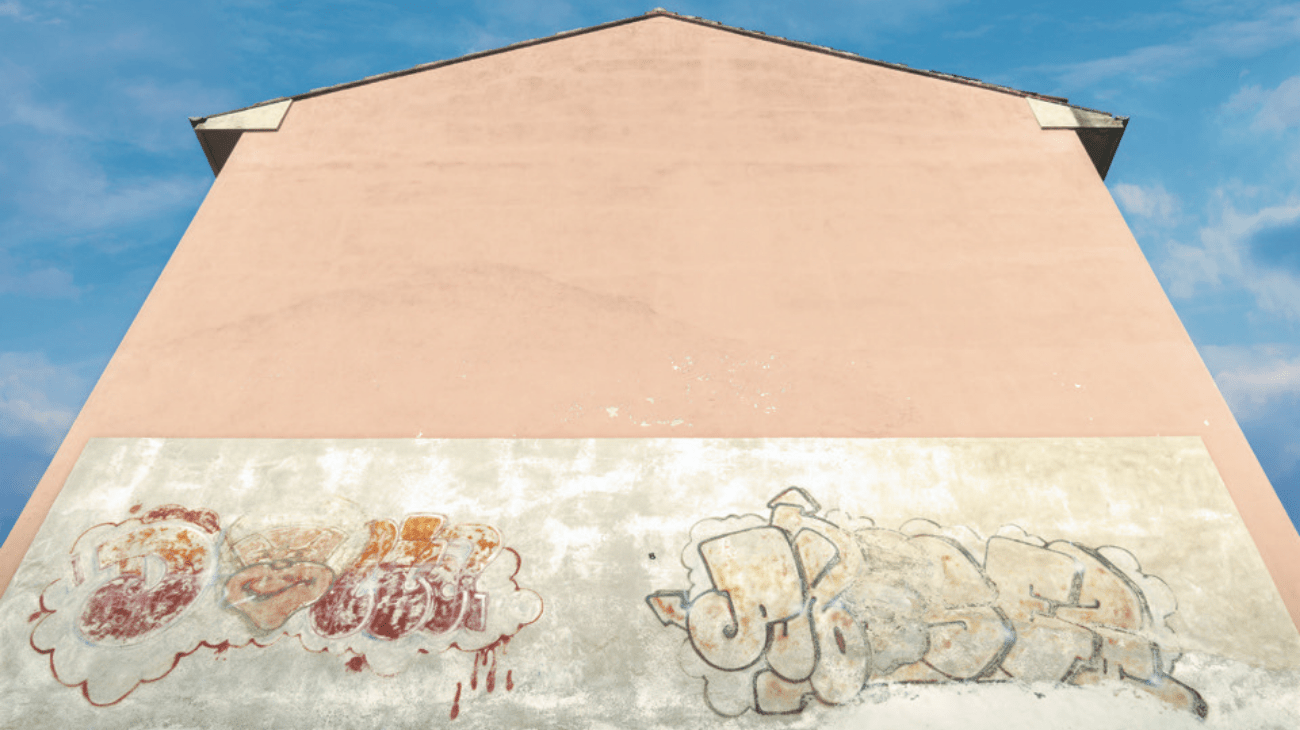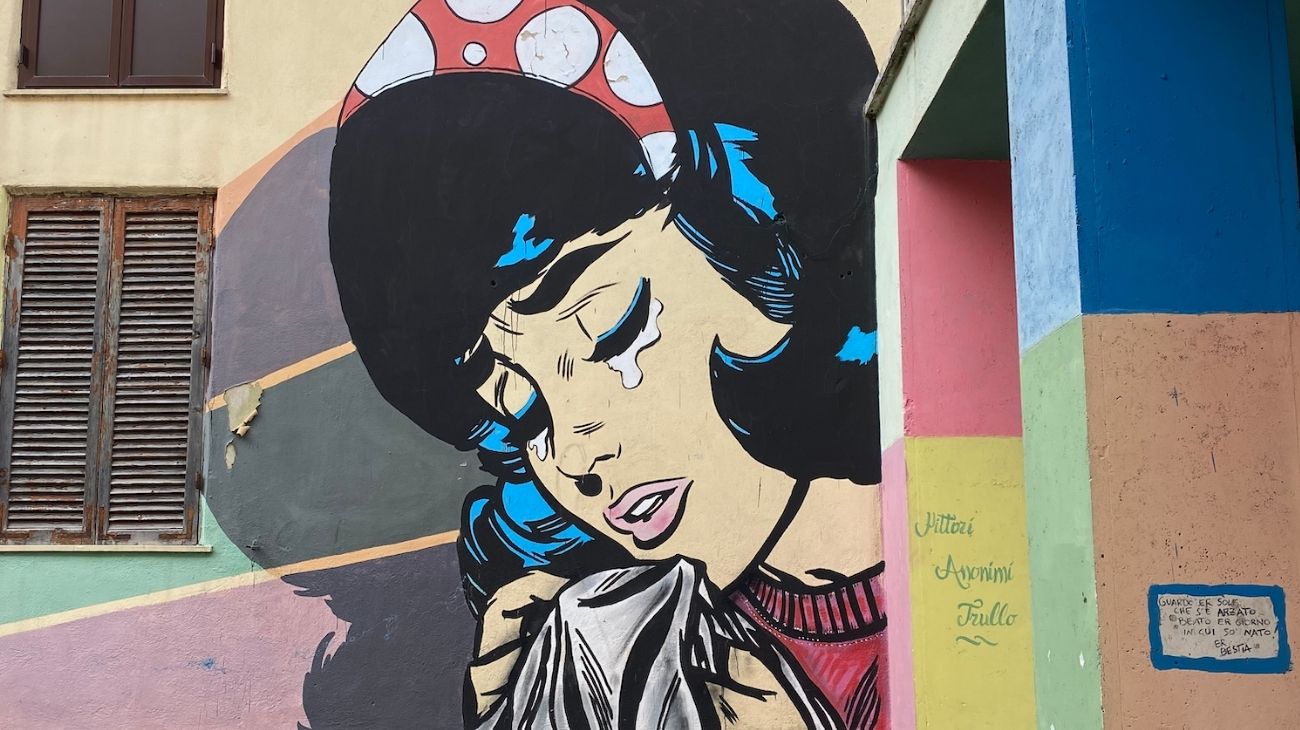
STREET POETRY
How words, pictures, and imagination transformed the Trullo district in Rome.
If you take the not inconsiderable route from the center of Rome to one of its more outlying suburbs, Trullo, in the south-west of Rome between Magliana and Portuense, you may be surprised to find that this district still gives the impression of being a small town in its own right. On the main street older people sit on benches, young people meet at the bar, people greet each other, they know each other, and there seems to be a feeling of solidarity and closeness, which is rarely found in big city centers.
The district was born around 1917 in a rural area, and during the Fascist regime more than 300 housing units were built there, destined for the citizens of the Monti district, who were expelled for the construction of the Via dei Fori Imperiali, and for the Italian settlers who returned from North Africa. Today, it is well connected to the rest of the city but still separated from Rome’s city center by a nature reserve used for agricultural purposes. As a result, the district has developed according to urban and social rules that are more similar to those of the countryside than those typical for the outskirts of a large city.
Nevertheless, Trullo was and partly is also a place of many social problems, unemployment and criminality. Still characterized by buildings in the style of the 1950s, the quarter appears partly neglected and dreary due to a lack of municipal maintenance. An initiative, driven and supported by the local community, had set itself the goal of counteracting this and artistically enhancing its neighborhood, by means of street art and street poetry: wall paintings and verses together, telling a strong story, drawing inspiration from the daily life of the neighborhood.
With the aim of upgrading the district, creating connections to and between people and building up an open-air museum together, the third edition of the International Street Poetry Festival took place in the Roman district of Trullo in October 2015, after Milan (2013) and Genoa (2014).
Organized by the Poeti der Trullo, Poesie Pop Corn, Solo, the Pittori Anonimi del Trullo, and with the support of the municipality, some of the most important street poets from all over Italy were invited, who, together with street artists from the Roman and non-Roman scene, created a series of urban art works in different places around Trullo. Under the festival theme, “i Viandanti” (“the wanderers”), which was intended to address all those who believe in a positive alternative, houses, walls and shutters were redesigned with poetry and art. It was the first time in Italy that street poetry met street art at an event of this size.
What drove the brushes of the local Pittori Anonimi del Trullo (the anonymous painters of Trullo) was the desire to change the streets they live in to make them more beautiful for everyone, including for those who are passing through, and to offer the inhabitants an alternative to the desire to flee elsewhere.
Many other street artists have created suggestive artworks, rich in expressiveness and narrative power, giving the formerly run-down neighborhood a new face and a new viability. They include Bol23, Diamond, Gomez, GRNDR, Marco Tarascio/Moby Dick, Marcy, Mr. Klevra, Piger, Solo, Sugar Kane, and many more.
The work of these street artists mingled with the other soul of Trullo: the stories and the life of the Poeti der Trullo (Poets of the Trullo), a group of young people who, to define themselves, created the neologism “MetroRomanticism” and defined this poetic movement in their manifesto. This movement starts from the ground, from the neighborhood, from the people, from the simplicity and complexity of their everyday life. For them, poetry is a way of looking at the world, not telling it. Rather, it is a poetic approach to life, a constant dialogue with people, feelings, events, and symbols of the neighborhood and the city in order to grasp its hidden nuances and its inner message. Indeed, in their partly sarcastic, partly nostalgic words full of love and anger there are no real verses in classical rhyme, but compositions in which poetry is embedded in the meaning and choice of words. It is living poetry in the everyday space of people: decorative but also decelerating, stimulating people to stop, reflect and think, and expanding the visual horizon through a sensory space.
Besides the Poeti der Trullo, the following street poets also took part in the festival: Poetry Pop Corn, Ivan, Alfonso Pierro, Davide e Guido (Poesia Viva Lecce), Factory Writing, Francesca Pels, Gio Evan, M.E.P., Mister Caos, Poeta del Nulla, Poeti della Sera, Ste-Marta, and Tempi DiVersi.
Trullo is a positive example of the community-building and regenerating effect that a symbiosis of art and poetry can have in public spaces. Even today, five years after the intervention, a visit to Trullo is still worthwhile. There are numerous works to marvel at – some of them large, some hidden – and it is not unusual for residents to spontaneously give a “guided tour” of their neighborhood and share exciting anecdotes about the works and their stories with interested visitors.
_______________________________________
_______________________________________
November 2020 I Laura Vetter


